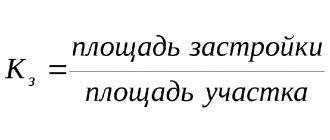When family life develops according to ideal canons, like: “they lived happily ever after and died on the same day,” jointly acquired property is a source of wealth and joy in the family. If life together does not work out and the spouses get divorced, it becomes a curse.
While separating cups, spoons and other movable belongings is still relatively easy, when it comes to real estate, people are simply stumped.
How to divide something that at first glance seems indivisible? An apartment? Dacha? House? The section of a private house in which a family permanently lives raises especially many questions. They pour in literally as if from a cornucopia:
- How to understand who is entitled to what share?
- Are spouses' shares always equal?
- What if the house was inherited by one of the spouses?
- What if it was registered in the name of one of the spouses, and the other spouse was involved in the construction and arrangement, or both together?
- What to do if, in addition to the husband and wife, children live in the residential property?
- What if one of the children is disabled?
- Is it possible to divide not only the monetary equivalent of the house, but also the premises itself, in fact?
- What methods of division exist?
And these are not all the questions that arise. In this article we will try to most fully illuminate the problem of dividing a private home during a divorce from a legal and practical point of view.
Home ownership
Russian civil legislation contains the concept of joint ownership. Family is a specific concept of common family members, in particular spouses. As for the husband and wife, everything that each of them buys or acquires during the marriage (except for inheritance and property received as a gift, but more on that below) is included in the joint property of the spouses.
At the same time, the termination of a marriage does not in itself become the reason for the termination of the fact of joint ownership of property. For example, after a divorce, the house still remains shared. And it will remain so for an indefinite time until it is divided legally.
That is, spouses can still reach mutual agreement and jointly dispose of the common house, or make a fair division, and then each dispose of their share (part).
ATTENTION! Joint property of spouses does not apply to children! That is, a house that belongs to the parents does not belong to the children (unless it was purchased or built with the participation of maternal capital).
This issue is regulated by Article No. 60 (clause 4) of the RF IC, and children are not subjects of the division of family property, regardless of whether the parents divide it due to divorce or just like that (according to the legal norms of the Russian Federation, spouses can divide property among themselves, without dissolving the marriage).
Community property in a marriage does not mean that either spouse cannot have personal property. For example, property donated by spouses to each other or to some third party is considered the personal property of the recipient of the gift and is not subject to division. The same applies to inheritance received under a will or line of succession. As well as property that the husband or wife owned before marriage.
Although, when it comes to home, there may be options. For example, before marriage, the wife had a plot of land with a dilapidated “barn”. During his family life, the husband, investing his earned money and personal labor, contributed to turning it into a comfortable estate. Such a house may be classified as joint property because the value of the property has increased significantly during the marriage. Such issues are resolved in court.
Division of land under the house
When dividing home ownership, the question of the divisibility of the land plot inevitably arises.
The legal (legal) meaning of the criterion of divisibility of a land plot means that a plot is recognized as divisible if, as a result of the division, independent plots are formed, the permitted use of which can be carried out without transferring it to land of a different category and the requirement for the minimum size of a land plot established by legal acts of local government bodies (Article 11.2; 11.4; Clause 1, Article 33 of the Land Code of the Russian Federation; Article 1182 of the Civil Code of the Russian Federation).
In other words, the possibility of its actual division directly depends on the area of the land plot. For example, if a land plot with permitted use for individual housing construction (IHC) has an area of 6 (six) acres, then theoretically it can be divided into two plots of 3 acres each. Division of such a land plot into a larger number of parts is legally unacceptable. The exception is cases of division of land plots on the basis of judicial acts.
Ways to divide a house. Agreements or court
Like most issues regulated by the RF IC, the problem of dividing a private house can be solved in two ways:
- Agree privately among yourself and draw up an appropriate notarial agreement that will have full legal force
- Draw up a statement of claim and allow the court to resolve insurmountable differences between spouses, based on legislative norms and rules
Let's look at both methods in a little more detail.
Agreement
The husband and wife independently determine the shares that each of them receives in the event of a divorce. According to the rules, they should be equal. However, spouses can also agree on unequal shares, taking into account, for example, children.
Although from the point of view of the law, children do not have the right to parental property, the law does not prohibit parents from taking their interests into account privately.
For example, a spouse leaving the family may transfer his share to the children in lieu of monthly alimony payments. Or leave the spouse, with whom the children live, a larger share in the house. Simply put, by agreement, spouses can agree on any method of dividing the house, or reimbursement of part of its value by the one who will continue to live in it.
This method is convenient and preferable in the sense that the internal affairs of a family (even if broken up) remain its internal affairs and do not require the intervention of government bodies. But it can only be applied when the conflict between divorcing spouses has not reached the “extreme boiling point” and people are still able to communicate constructively with each other.
Court
If the husband and wife cannot agree or suspect that the other party “wants to deceive them,” they will have to resort to the help of the court. One of the home owners, or both together, can sue. In this case, a joint statement is written.
It is better to submit an application to the territorial court at the location of the house (especially if it is joint). If one of the spouses files a lawsuit, he can do so at the place of residence of the other (the defendant).
Dividing a house does not have to happen at the same time as the divorce process. You can do this in advance, or, conversely, after the divorce. You have the right to choose a mode that is convenient for yourself, and you should do so.
For example, if the divorce is complex and is accompanied by several claims for alimony, the place of residence of children, and the order of meetings with them, it is better not to complicate the already complicated process with an additional claim, but to postpone the section “for later.” If there are no particular disagreements, it would be optimal to “sue” at one time, so as not to repeat the entire unpleasant procedure again.
Statute of limitations
According to the provisions of Article No. 38 (clause 7) of the RF IC, spouses are given three years to divide the common property among themselves. But this figure should not be taken unambiguously as a three-year period from the date of divorce.
Article No. 200 (clause 1) of the Civil Code of the Russian Federation explains that the period of validity of a claim is considered not from the moment of the occurrence of the event giving the right to file a claim, but from the moment the plaintiff becomes aware that his rights (in this case to common property) have been violated . Let's explain this with a real example.
Example from judicial practice 2021
Citizen A was married to citizen B for 12 years. During this time, the couple built a house. After the divorce, B remained living in the house, which A did not object to. She did not renounce the right to joint property, but simply went to live elsewhere.
He lived in a house with a new family and had two children. 8 years later B died. The inheritance (actually, this house) was to be divided among his new wife, mother and two sons.
However, A filed a lawsuit to restore her rights to half of the house as property acquired jointly during the marriage. The defendants (heirs B) insisted that the statute of limitations had expired, since 8 years had passed since the divorce.
The case was considered in turn in three instances. The territorial court satisfied A’s claim, the appeal sided with the defendants, and the Supreme Court, where the cassation appeal was filed, confirmed the correctness of the first instance and citizen A.
It was recognized that before the event preceding the claim (the transfer of the house by inheritance as the sole property of B), citizen A had no reason to believe that her ownership rights to half of the house, which belonged to her on the basis of joint ownership with B, were violated.
Therefore, the statute of limitations has not expired and the claim must be allowed because A did not declare her waiver of title in favor of B.
This precedent confirms the position of the Supreme Court regarding the statute of limitations regarding the division of joint property after divorce. From a legal point of view, material assets belonging to spouses in a marriage can be divided at any time.
As for the practical side of the matter, then, perhaps, it is more reasonable to deal with the division of property after a divorce in the “foreseeable future”, without postponing this issue for many years.
After separating, each spouse begins to build his own life independently. New people appear in it, new families are created. You can, of course, “get yours back” after 20 years, but then be prepared to face grueling legal proceedings and difficulties in getting your share in the house that once belonged to your family.
Contents of the statement of claim
The requirements for statements of claim are more or less the same for all types of claims: business style, absence of errors and blots in the test, compliance with the general form of business documentation (“header”, title, main part, date and signature at the end). Writing method - handwritten or printed (previously documents were printed on a typewriter, now this can be done using a computer). All this is recorded in detail in Article No. 131 of the Code of Civil Procedure of the Russian Federation.
The application must indicate:
- Full and exact name of the court, plus sometimes the name of the judge
- Full names and addresses of the plaintiff and defendant (if the registration and actual addresses are different, both should be written)
- Cost of the claim (since the division of the house refers to property claims, and the fee for it is calculated depending on the price of the house, cadastral or market)
- Circumstances of the claim (data on marriage and divorce, data on the purchase of a house, the need for its division, additional information) with links to the attached documents
- Claim (to divide the house)
- Links to legislative norms giving rise to the claim
- List of attached documents, which must include: Copies of passports, marriage/divorce certificates
- Title documents for real estate (house) and documents confirming its value
- Duty payment receipt
And also (depending on availability and need)
- marriage contract
- separation agreement
- children's data
- and anything else that the court requires
A sample application can be found and downloaded on the Internet, or you can write it yourself with the help of a lawyer. All documents are submitted to the office in triplicate. After the case is accepted, the first meeting is scheduled a month later. Further, either the court makes a decision on division (it comes into force after another month, during which the defendant can challenge it), or schedules a new hearing if additional documents and evidence are required.
Options for dividing a private house into shares
You can make a real division of the house and land:
- by agreement;
- through the court.
Features of the agreement section
Procedure for dividing a house:
- get together and resolve all controversial issues
- draw up technical passports for the facility as a whole and the planned individual premises;
- sign an agreement on the division of shares in joint property;
- assign cadastral numbers to newly formed objects;
- registration of termination of the right of common shared ownership.
Sample agreement on division of a residential building
| Agreement on the division of a residential building |
After allocating shares in the building, you can allocate shares of the land plot. Submit an application for land surveying. Draw up technical plans for new areas. Assign cadastral numbers to the selected areas. Register ownership of new land plots.
If the land was under the right of use, you will have to enter into lease or use agreements.
Sample agreement on division of land
| Agreement on division of land |
Features of partition through court
It is not always possible for the parties to reach an amicable agreement, and then the issue is resolved in court. The application is submitted to the district court at the location of the disputed real estate. Sequence when going to court:
- application for a cadastral engineer;
- allocation of shares;
- drawing up and filing a statement of claim in court;
- participation in court hearings;
- obtaining a writ of execution;
- registration of property rights;
Sample claim for division of a house
| Claim for division of a house in kind |
How to avoid mistakes in the statement of claim or violations of the requirements of Art. 131 of the Code of Civil Procedure of the Russian Federation for the contents of the document, read in detail in the article Claim for the division of a residential building in kind between the owners
Claim for allocation of land in kind
| Claim for allocation of land in kind |
Is it possible to divide a house after a divorce?
In this context, we are not talking about allocating shares in property to spouses, but about the actual division of living space in accordance with these shares. That is, whether it is possible for the former spouses to continue to live in the same house, but no longer “under one roof,” but each in their own half, independent in fact and legally.
Yes, in some cases this is possible, but only a forensic construction examination can give a final answer.
Expertise
The actual division of the house is possible only if the requirements of housing standards and the functional purpose of the premises are met. That is, it depends on the size and layout of the house. The conclusions of the examination may be of a recommendatory nature regarding possible redevelopment. The examination may offer several options for the division or come to the conclusion that it is impossible.
For example, it is impossible to divide a house with stove heating if the stove is only in one half, and it is impossible to install a second analogue. It is impossible to divide a house into floors if it is not possible to provide an independent entrance to the floor. You cannot give the wife the kitchen, and the husband the living room and bathroom. It is impossible to divide a small house if after the division the area of each part is less than the required living space standards. And so on.
How to divide a house after divorce?
If, from a technical point of view, the house can be divided into two equal, independent parts, the court decides to divide it into shares and allocates these shares in kind.
If division is possible, but the size of one independent part is smaller in area and does not correspond in size to the legal share, the court may decide on division in kind and monetary compensation. That is, the co-owner for whom the actual share turned out to be greater will pay a certain amount to the one whose share is less.
If actual division is impossible in principle, there may be a variety of alternative solutions (it is important that it suits both parties):
- Sell the house and divide the proceeds according to shares
- Transfer the house to one of the co-owners and require the second to buy out the second’s share
- Continue to share the house, establishing an order that does not violate the rights of either party
But in any case, judicial division is carried out on the principle of fairness and equality of marital shares.
In judicial practice, there are cases when an unfinished house is divided. If it structurally allows for actual partitioning (with minimal or even no design changes), then it actually divides. If not, it is subject to division by alternative means. The price of such a house includes the price of materials needed to complete construction.
Share size
By default, marital shares are equal unless other proportions of division are stated in the marriage contract or agreement. But, of course, in practice there are exceptions.
For example, the court may allocate a larger share to the spouse who has minor children in his care. Especially if the child is disabled group I or II. Or reduce the share of one of the spouses if the second proves that he did not invest funds in the family budget, but, on the contrary, brought losses to the family.
This rule cannot be applied to a woman who gave birth and raised children without working. Also, physical inability to work (long-term illness, disability) is considered a valid reason that allows one of the spouses not to work and at the same time have an equal right to joint property.
Also, before proceeding with the division of joint property (including a house), the court allocates that part of the property that is considered personal (purchased before marriage, gifted, inherited). It doesn't share. The rest is divided into shares. If possible, the court establishes the order of the actual division (what exactly will go to whom).
If the house was purchased with maternity capital funds
This is a very special case. Such a house is not considered the joint property of the spouses, but the joint property of the entire family, including children. Consequently, it will not be divided into two, but into everyone. If a house is purchased or built using maternal capital, each child must have their own share in it.
ATTENTION! No housing transactions in which a share belongs to minor children are possible without the involvement of guardianship and trusteeship authorities. Including the conclusion of a voluntary agreement on the division of property or judicial division after a divorce.
The guardianship authorities check whether the child’s rights are respected and give their consent or do not give consent. In case of judicial division, the opinion of the guardianship authority can be taken into account when requesting that the spouse with whom the children remain live have a larger share in the house.
If there are children
The presence of children in most cases does not affect the order of division of property after a divorce. The financial rights of the child are protected by assigning alimony, but family property is a completely different matter. It belongs to the parents, and children have no right to claim it.
But the RF IC allows an increase in the share of the spouse, with whom the children remain after the divorce, in real estate (we are talking about a house). If the plaintiff intends to exercise this right, then it is important to draw the court’s attention to the presence of children. This should be specifically mentioned in the claim, or a separate petition should be filed.
Most likely, the share of the parent who remains with several minor children or with a disabled child will be increased. This should also be reflected in the claim.
Is the child's property divided?
Minor children also have the right to own personal property. Computers, musical instruments, and expensive high-tech toys belonging to children are not subject to division. Moreover, even if the house in which the family lives is received by the child as an inheritance from another relative, or given as a gift, it will also not be divided between the parents.
Property belonging to the child is transferred to the parent with whom he will live. In this case, the second parent is not entitled to any compensation.
ATTENTION! It is important to list all property belonging to the child in the statement of claim. This will save you from disputes and the need to prove this fact in court.
How to divide a house into two owners
A house for two owners has two separate entrances and a postal address. The type of the house is multi-apartment, and the category of land is for individual residential construction. In this situation, the procedure is as follows: register the object as common shared ownership (this confirms the intended use of the land) and then allocate shares in kind, as described above.
Important! For objects built in 2006 and later, you must first obtain a certificate of commissioning of the object and then allocate shares.
Judicial practice of dividing a house when there is a child
Firstly, the presence of a minor child who lives with him gives the plaintiff the right to choose the court authority. A claim can be filed not only at the location of the house or the place of registration of the defendant, but also at your place of residence.
Secondly, judges quite often increase the share in the house for a parent of several children or one who cares for a disabled child.
ATTENTION! Any sale of real estate in which children live and are registered is possible only with the permission of the guardianship and trusteeship authorities. When parents, when dividing property, decide to sell the house and divide the money among themselves, a representative of the guardianship must be present at the court hearing. The court itself will call him. But in some cases, it is reasonable to inform the guardianship authorities in advance about the planned event, convince them that the child’s rights will be respected, and obtain permission to sell the house. It should be attached to the statement of claim, then the process will go faster.
If you still have questions regarding the division of a house after a divorce, the qualified lawyers of the Prav.io portal will be happy to answer them.
Where to start dividing a house
Signs of the legality of dividing a house in kind:
- a dedicated separate room is intended for one family to live in, has a common wall (common walls) without openings with an adjacent room, is located on a separate plot of land and has access to a common area;
- state registration of the right was carried out and a legal address was assigned;
- no damage was caused to the property of other shareholders.
After division, each owner can sell, donate, bequeath, or mortgage his part of the property. The first contender for the purchase is a neighbor.
You should start dividing an object in kind in the following order:
- obtain permission for redevelopment for each allocated share;
- issue a cadastral and technical passport;
- carry out land surveying and prepare the necessary documents;
- draw up an agreement;
- register the property with the state cadastral register;
- register property rights;






